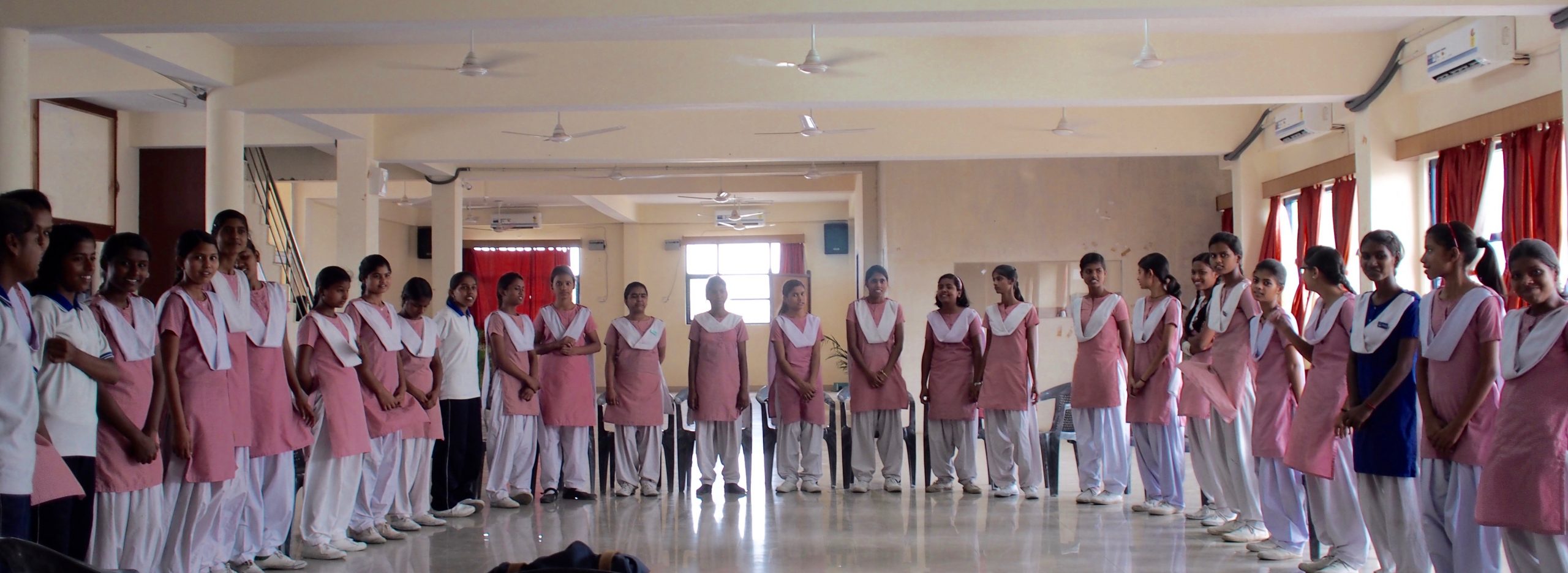Menu
Urban School Performances:
Theatre's Impact in School and Beyond...
How do relationships among culture, identity, multiculturalisms, student engagement and theatre impact the lives of youth in schools and communities traditionally labelled ‘disadvantaged’?

Overview
USP (Urban School Performance) is a Canadian-led, international research project that examined, through attention to theatre contexts and practices in schools, how the relationships among culture, identity, multiculturalisms, student engagement and theatre have an impact on the lives of youth in schools and communities traditionally labelled ‘disadvantaged’ in the cities of Toronto (Canada), Taipei (Taiwan), Lucknow (India), and New York City (USA).
The insights of youth about questions of engagement with school was a central concern in this project, which generated new ways of engaging diverse youth in the research process.
- One school, in each of Lucknow, Taipei and Boston, and two schools in Toronto, constituted the study sites.
- Researchers in all four sites engaged in ethnographic work in each school, working collaboratively with classroom teachers, students and visiting artists contributing to the drama curriculum.
- In Toronto, Boston and Lucknow, and to a lesser extent in Taipei, the researchers were also involved in the pedagogy of the classrooms, participating in individual drama projects or working closely with groups of students over sustained periods of time.
- The curricular expectations, and the way drama was positioned in the larger school, remained different in each site, as was the kind of drama pedagogy experienced by the students.
Research Sites
Toronto, Canada
School Site 1: Middleview
Location: Downtown Toronto
Population: 1797 students (62% male, 38% female, 56% of students with a primary language other than English)
What's Unique:
- Physically the largest technological school in the province of Ontario
- Offers a comprehensive selection of academic and technological study programs
School Site 2: Braeburn
Location: Downtown Toronto
Population: 500 students plus 2000 adult learners (students come from across the city)
What's Unique:
Population: 500 students plus 2000 adult learners (students come from across the city)
What's Unique:
- Offers spaces for (18-20 years of age) in a special 'at risk' program
- Attracts a population of students who have been unsuccessful at previous high schools and thus far unable to graduate
Project Developments
- In the 2nd year of the project, the school-based ethnography moved into two professional theatres in downtown Toronto - Theatre Passe Muraille and Canadian Stage
- 75 post-performance interviews with youth and adult audience members fresh from the experience of seeing Project: Humanity's powerful Verbatim play The Middle Place about shelter youth.
- We became very interested in cultural representations of youth and in theatre as a form of social commentary
- We then returned to the schools and documented the students' own processes of creating and performing Verbatim monologues.
Previous
Next
Lucknow, India
The Prerna School
Location: Gomtinagar neighbourhood of the Uttar Pradesh state capital city, Lucknow.
- Affluent residential homes are situated alongside very poor slums.
- The most populous state of India with a population of more than 199 million, and a sex ratio of 908 women to 1000 men.
What's Unique:
- Prerna operates in a second shift in the afternoon, after the Studyhall day is over
- Prerna classes are held from 1:30pm until 5:30pm in the summer, and 2:00pm until 6:00pm in the winter.
Studyhall Educational Foundation
- Private foundation that opened Prerna in 2003.
- SHEF began its work in 1986, with the goal of providing quality education to all children in India.
- Based out of Uttar Pradesh (one of the largest and most underdeveloped states in India), SHEF is reaching out to over 300 teachers, 6,000 children and 14,000 student teachers through its schools and other programs.
- Studyhall, also established by SHEF, is a fairly large, well-equipped and well-furnished building of a private fee-paying school for middle-class children.
Previous
Next
Taipei, Taiwan
Si Fang High School of Commerce and Industry
Location: Capital city of Taiwan
Population: 2500 staff and students together with a male to female ratio of 4:1.
Student Population:2009 drama class had 43 students (27 boys and 16 girls); 2010 drama class had 39 students (24 boys and 15 girls).
What's Unique:
- Founded in 1917, offers both mixed and vocational streams.
- School is highly disciplined, has the reputation of low academic performance.
- Eight classes a day between 8:10 am and 4:50 pm Monday-Friday and each class is 50 minutes long.
- Known to serve socio-economically disadvantaged families.
- Average commute is one hour.
Research Overview
Teachers & Researchers:
- Dr. Yu-hsuan Lin, Dr. Su Chien-ling, independent artist Betsy Lan and research student Hui-wen Lo.
- 11, 2-hour classes with the students doing physical theatre activities, games of concentration and community building exercises.
- Field trip to see Betsy Lan in, called in translation, “The One Who Boiled the Sea”.
- Students watched a performance of "The Doors" devised by the students at Middleview in Toronto and engaged in visual art responses to the performance they watched on video.
- Students completed our on-line and reflective surveys at the end of the workshops.
Previous
Next
Boston, USA
Urban Middle and High School Pilot
Location: Downtown Boston
Population: 490 students (Over half of the students are Asian, one quarter are African American/Black, one eighth of the students are Hispanic and less than 10% are White or Other)
Teachers:
- Collaborator:Dr. Christina Marin
- 37 teachers - Black (20.7%), Hispanic (6.9%), White (34.5%) and Asian (37.9%)
- Longer school days, no classes on Wednesday afternoons for students and professional development for teachers.
- High attendance rate (93.9%) and a low drop out rate (1.0%).
- Regular Education (78.9%) and Special Education (21.0%) programs delivered alongside International Baccalaureate and Advanced Placement courses.
Previous
Next